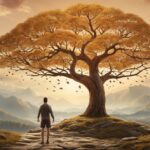Round Rock Journal – For years, conversations about education have centered on technology, curriculum, and teaching methods. Yet one element often overlooked is light itself. In a traditional classroom, lighting has mostly been functional fluorescent bulbs brightening the room without much thought to impact. But new research suggests that light can shape mood, focus, and even memory. By reimagining how light is used, education can transform from routine lessons into immersive experiences that enhance both learning and well-being.
“Read also: Sound-Reactive Visual Installations in Public Spaces, Transforming Cities with Interactive Art“
The Science of Light and Learning
Studies show that exposure to natural light boosts concentration, improves sleep cycles, and reduces stress. In contrast, harsh artificial lighting often drains energy and creates fatigue. In a traditional classroom, these effects accumulate over time, subtly influencing how students engage with lessons. By introducing adaptive lighting where brightness and color temperatures shift throughout the day schools can align environments with human circadian rhythms, creating classrooms that feel alive and responsive.
From Passive Spaces to Dynamic Environments
Traditional classrooms are often rigid: rows of desks under uniform lighting, creating environments that stifle creativity. Light education challenges this model by turning lighting into an interactive tool. Imagine math lessons illuminated by cool, sharp tones to sharpen focus, while literature discussions take place under warmer hues to spark creativity. Such subtle adjustments can make learning more engaging, tailoring environments to the content rather than forcing all subjects into the same static box.
The Emotional Power of Light
Light is not just about visibility it shapes emotion. Warm lighting creates comfort, bright blue tones stimulate alertness, and dimmed settings invite reflection. By harnessing this, educators can set emotional tones for lessons, guiding students into states of curiosity, calm, or excitement. This flexibility is something traditional classrooms rarely provide. Integrating light education means acknowledging that learning is not purely cognitive; it is also deeply emotional.
Technology Meets Pedagogy
The rise of smart lighting systems opens doors for practical integration into schools. These systems can be programmed to change automatically based on time of day, subject matter, or student activity. Teachers gain another tool in their pedagogical arsenal, one that complements digital devices, interactive boards, and personalized learning methods. While traditional classrooms rely on static setups, light education injects adaptability, reinforcing the idea that learning environments should evolve with learners.
“Read more: Luxury Hotel Offers Free Stay Guarantee If It Rains“
Case Studies and Global Experiments
Some schools in Europe and Asia have already piloted light education programs. Reports show improved concentration during exams, reduced behavioral issues, and higher overall student satisfaction. These findings suggest that the benefits go beyond aesthetics they influence academic outcomes. In contrast, schools that cling to traditional classroom lighting risk missing opportunities to improve performance through such simple yet impactful changes. This highlights light education as a cost-effective innovation with long-term benefits.
Challenges and Considerations
Of course, revolutionizing classrooms through light is not without obstacles. Budget constraints, installation costs, and teacher training present hurdles. Some educators fear that technological lighting systems may distract or complicate classroom management. However, these concerns can be addressed with gradual implementation and professional development. The key lies in viewing light as an ally rather than an accessory, a perspective shift that traditional classroom frameworks often resist.
A Future of Adaptive Learning Environments
The ultimate promise of light education lies in adaptability. No longer will classrooms be one-size-fits-all. Instead, they can become responsive environments that nurture creativity, focus, and well-being simultaneously. Traditional classroom learning is not obsolete, but it risks stagnation if it fails to evolve. Light education represents an innovative step forward, blending science and art to create holistic spaces where students thrive. This reimagining may well define the future of education.


